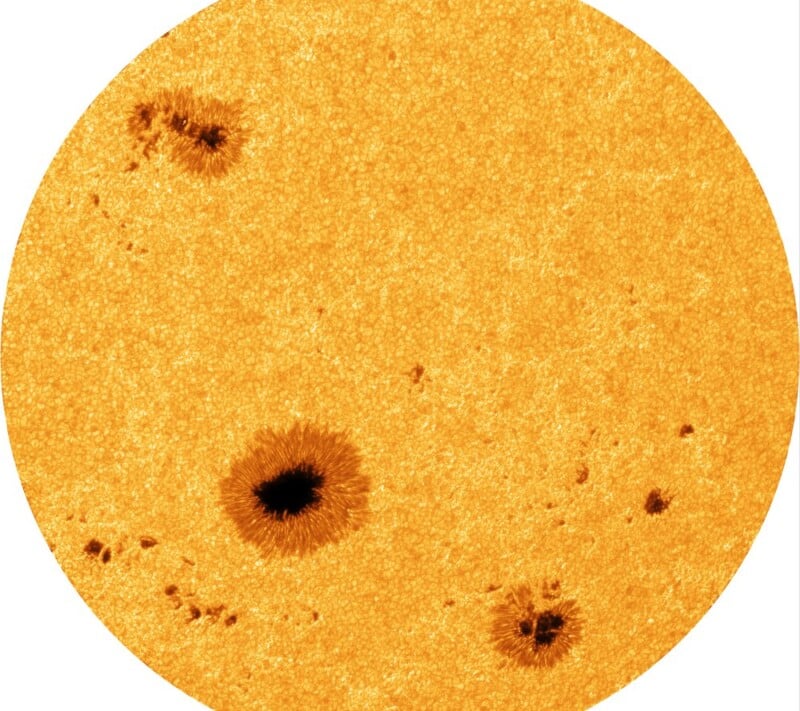Raging Sunspots Captured in Crystal Clear 8K By New Camera System

A new high-resolution camera system installed at the long-standing Vacuum Tower Telescope (VTT) in Tenerife, Spain is delivering some of the most detailed images of the Sun ever captured.
Developed by the Leibniz Institute for Astrophysics Potsdam (AIP), the system produces 8K resolution images, providing a significantly improved view of solar activity, including sunspots and magnetic field dynamics.
The VTT, which has been operational since 1988 at the Observatorio del Teide, has traditionally struck a balance between wide-field and high-resolution solar observations. The integration of the new camera system further enhances this capability, enabling researchers to study large-scale solar structures while capturing fine spatial detail.
The camera system captures 100 short-exposure images — each at 8000×6000 pixel resolution — over just four seconds at 25 frames per second. These are then combined using advanced image restoration techniques to mitigate atmospheric interference and reconstruct a final image. This process yields a spatial resolution of about 100 kilometers (62 miles) on the Sun’s surface.

According to the research team, the technology allows for the observation of dynamic solar events with a temporal resolution of as little as 20 seconds. The system can image areas up to 200,000 kilometers (approximately 124,000 miles) in diameter—about one-seventh of the Sun’s full span—placing large-scale solar activity into clearer context.
“In order to better understand solar activity, it is crucial not only to analyze the fundamental processes of the fine structure and the long-term development of global activity with various instruments,” says Rolf Schlichenmaier of the Institute for Solar Physics, which operates the VTT, “but also to investigate the temporal evolution of the magnetic field in active regions.”

The camera is also equipped with specialized filters that allow researchers to observe specific layers of the Sun, such as the photosphere and chromosphere. These layers are key to understanding plasma motions and the formation and evolution of sunspots.
“Our expectations of the camera system were more than fulfilled right from the start,” says Robert Kamlah, who developed the system as part of his doctoral work at the AIP and the University of Potsdam.
Carsten Denker, Head of the Solar Physics Section at AIP, notes the significance of the upgrade: “The results obtained show how, together with our partners, we are teaching an old telescope new tricks.”
The VTT’s optical aperture measures 0.7 meters (2.3 feet), and researchers believe that implementing similar systems on larger telescopes could push image resolution even further.